Baselitz as sculptor
From to
The Musée d’Art Moderne de la Ville de Paris is organising an exhibition of the sculptures of Georg Baselitz (b. 1938). This retrospective interpretation of one facet of the German artist – initially a painter and engraver – will include almost his entire sculptural output, covering a period of more than thirty years. Few of these works have been shown in France. Now recognised as a part of his oeuvre in its own right, Baselitz's sculpture gradually became more and more monumental in scale.
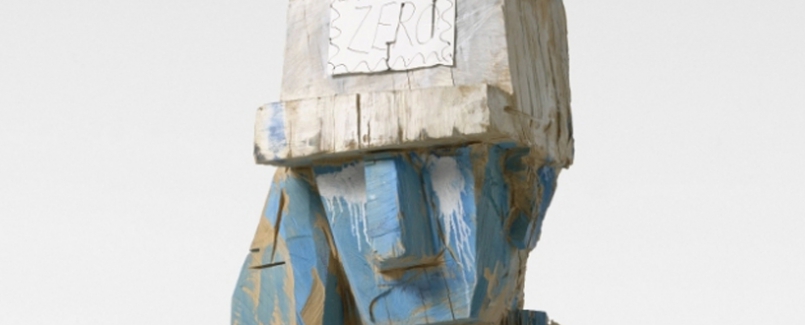
Forty painted wood pieces dating from 1979 to 2010 will illustrate the itinerary of an artist who has made a powerful contribution to the language of contemporary sculpture. As a counterpoint, a number of works on paper will highlight the rigorous consistency of the oeuvre – whatever the medium – in its treatment of the figure and its sources, and in its defiance of the accepted rules of perception. This substantial group of drawings displays a clear affinity with the sculptures: some are simple sketches, others suggest three-dimensional forms such as bodies and heads.
Given the scale of his sculptures in wood, Baselitz's tools were the chainsaw and the axe, an approach that allowed the expression of a radicalism different from that of his canvases. Whereas the inverting of the figure in his painting gave him "the freedom to really confront painterly problems", Baselitz saw sculpture as "the shortest path" to dealing with fundamental issues. Erudite and a major collector, he drew his subject matter from primitive forms like tribal and popular art, enhancing them with references to Italian Mannerism and such representatives of the Western tradition as Edvard Munch and Picabia.
The exhibition layout
The approach is chronological and based on certain key works. The sculptures are divided into various sequences: the output of the 1980s takes the form of a group of heads and standing figures. These are followed by works relating to memories of the postwar period, among them a representative selection from the Dresdner Frauen, begun in 1989. A number of torsos and anthropomorphic sculptures, together with pieces of fabric–covered wood indicate the concerns of the 1990s. Taking their inspiration from popular motifs, the outsize female figures dating from the end of the decade are followed by the most recent sculptures in the form of his monumental self-portraits.
Modell für eine Skulptur and early sculptures
Baselitz's first sculpture, Modell für eine Skulptur (1979) caused a furore at the Venice Biennale in 1980. As both "model" and "idea of sculpture", however, it embodied the features of the works to come: categorical rejection of the elegant, aggressively crude handling, connections with a personal or collective history, axe-work and painted highlights.
While in some cases individualised, Baselitz's first heads are not portraits, but rather vehicles for his conception of aesthetics. They retain the knots in the wood, as well as with the cracks and crevices due to his chopping and hacking.
The standing figures
With their look of having been "pulled out of the ground", these sculptures conjure up both trees and the tribal totems Baselitz collects. The close bond he feels with nature – and especially the trees that recur so often in his paintings and engravings – finds its most forthright expression in this medium. Born of a physical grappling with his material, the sculptures are profoundly, massively marked by his manner of working.
And yet these are not mere shapes. They conjure up, too, a primordial universe, the world of Saxon spirits and gnomes and an echoing of African and Oceanian sculpture.
Dresdner Frauen
Begun in 1989, this Women of Dresden series harks back to the end of the Second World War. Ten of these monumental heads, sufficiently individualised to suggest the victims of the destruction of their city in February 1945, make up a group given visual consistency by its hieratic postures, the violence of the cuts and the vividness of its colours.
Monumental figures
In the autumn of 2003, Baselitz's self-portrait Meine neue Mütze ("My New Cap") was the first of a series of larger-than-life sculptures. Whereas their predecessors were sometimes marked by a harsh irony, these standing figures were clad in costumes that make them look like children's toys. This group shows Baselitz making play with the discrepancy between this initial perception and the sheer gigantism of the works, while also adding autobiographical input.
Self-portraits
Baselitz's two most recent sculptures are self-portraits, unaffected representations of himself in a pose suggestive of the suffering Christ in popular art. These melancholy figures, predominantly blue in colour, are provided with unusual attributes – a white cap ironically branded "Zero" and high-heeled shoes – and an aggressive assertion of their sexuality.
Exhibition catalogue: Éditions Paris Musées, 37 €
With the support of IDI.
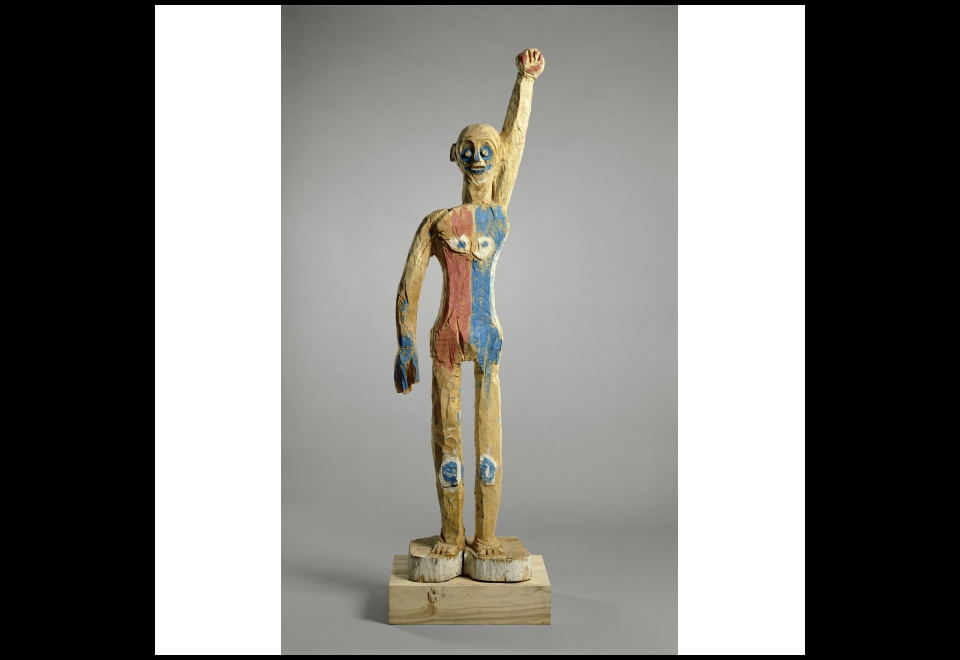
Ohne Titel 1982
Scottish National Gallery of Modern Art, Edimbourg
Acquis avec l’aide d’Art Fund ( William Leng Bequest )
Photo : Jochen Littkemann © Georg Baselitz
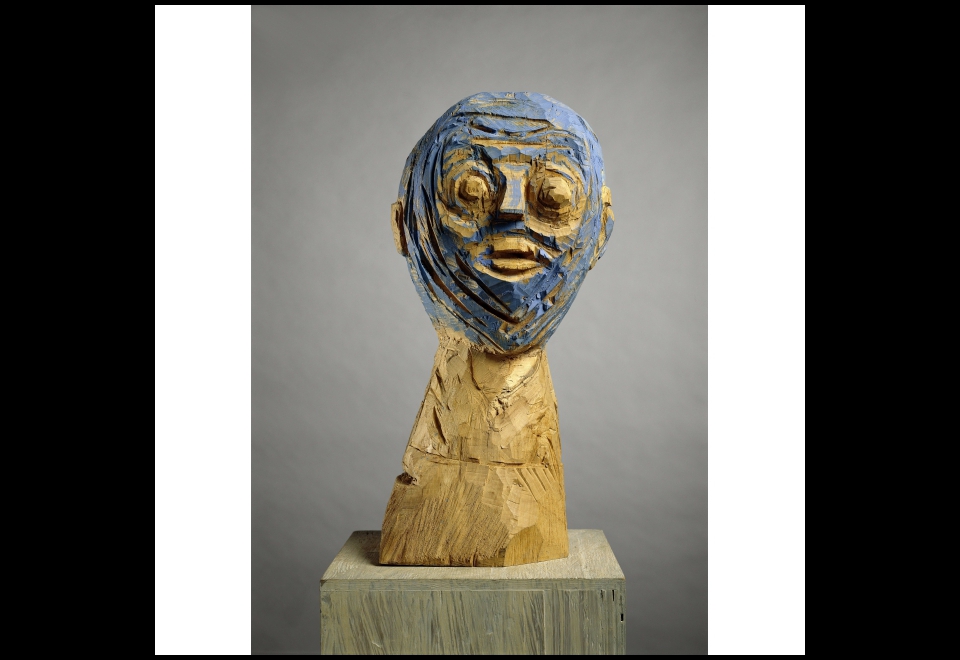
Blauer Kopf 1.III.1984
Photo : Jochen Littkemann © Georg Baselitz
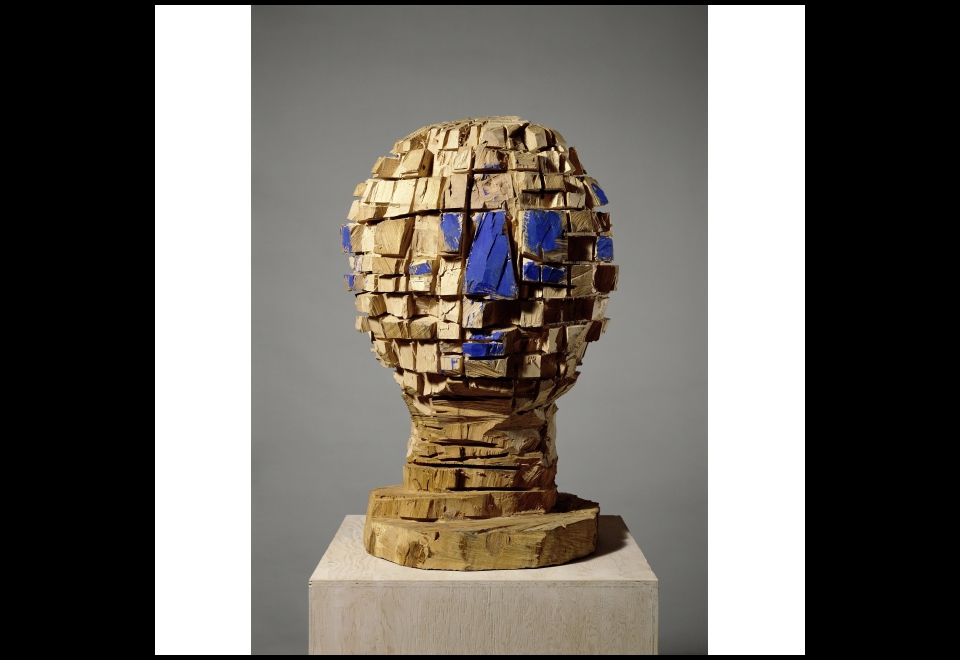
G-Kopf
Ludwig Museum- Museum of Contemporary Art, Budapest
Photo : Jochen Littkemann © Georg Baselitz
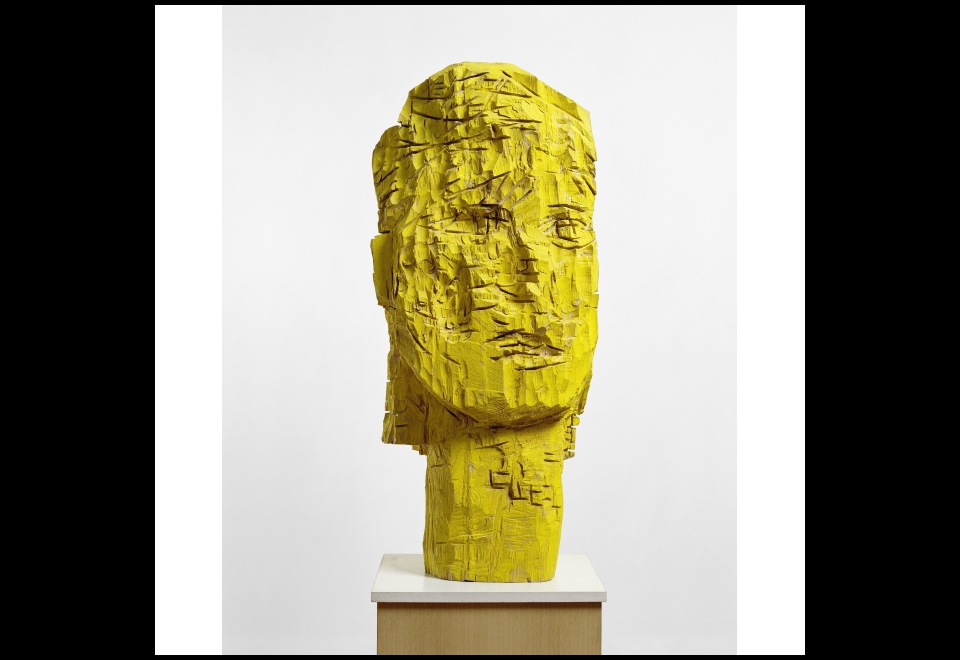
Dresdner Frauen - Karla
Collection Froehlich, Stuttgart
Photo : Jochen Littkemann © Georg Baselitz
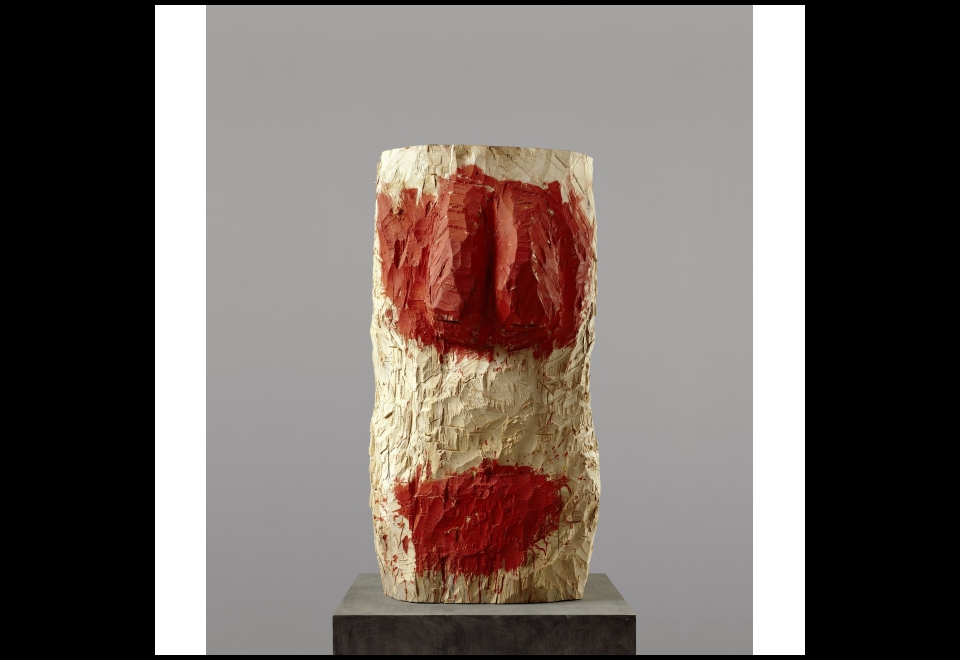
Männlicher Torso
Staatliche Museen, Nationalgalerie Collection Marx, Berlin
Photo : Jochen Littkemann © Georg Baselitz
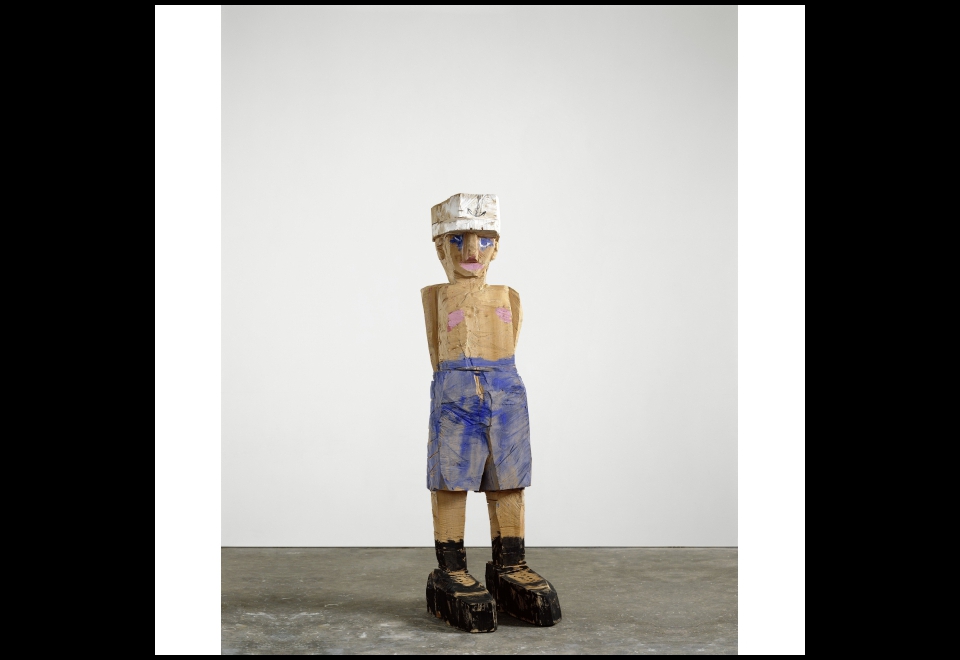
Meine neue Mütze
Essl Museum, Klosterneuburg/Vienne
Photo : Jochen Littkemann © Georg Baselitz
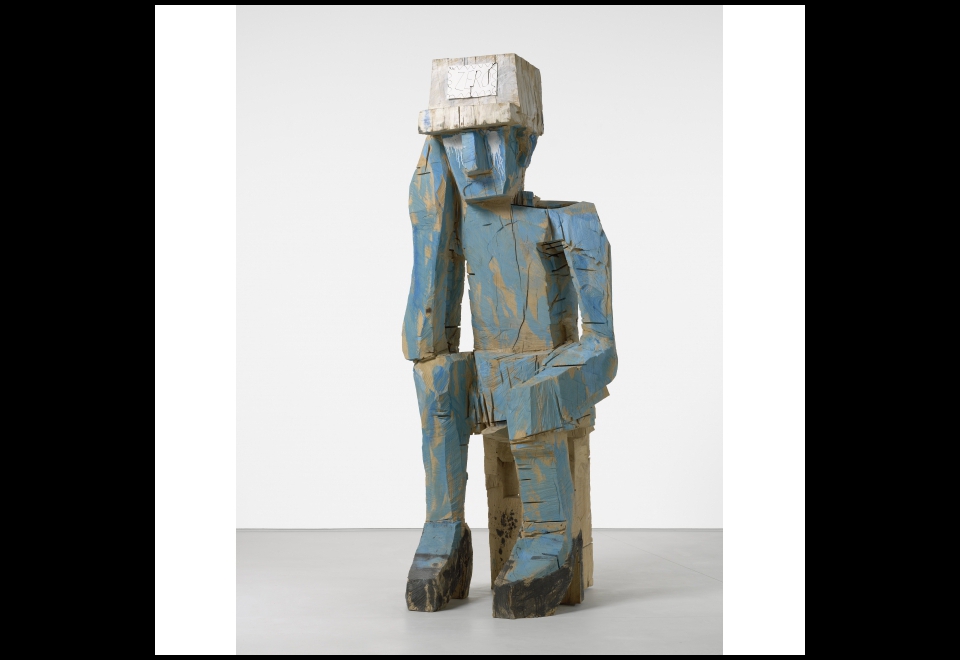
Volk Ding Zero - Folk Thing Zero
Collection privée, Courtesy Thaddaeus Ropac, Paris - Salzbourg
Photo : Jochen Littkemann © Georg Baselitz
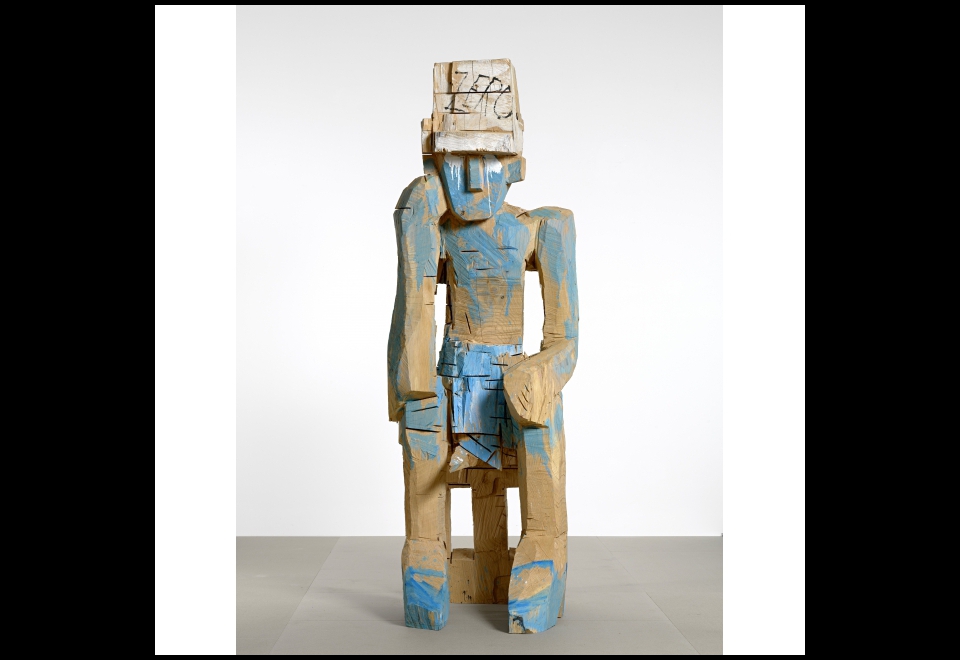
Dunklung Nachtung Amung Ding
Hall Collection
Photo : Jochen Littkemann © Georg Baselitz

